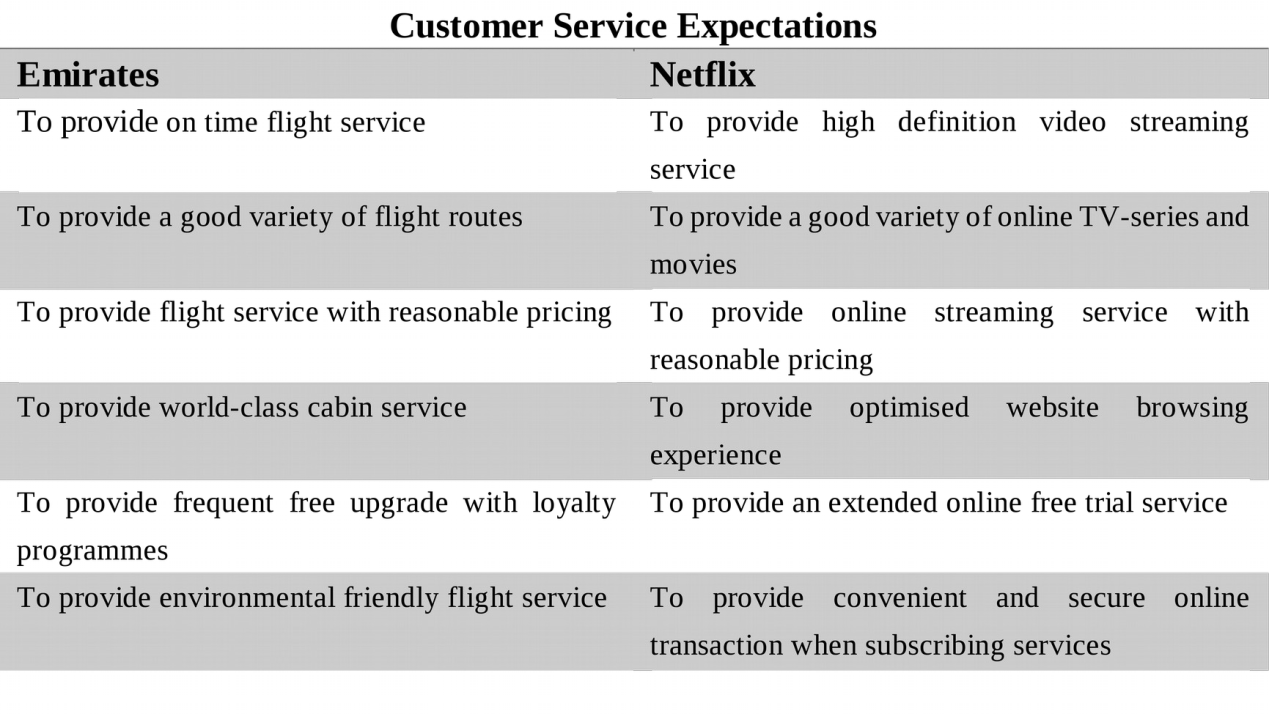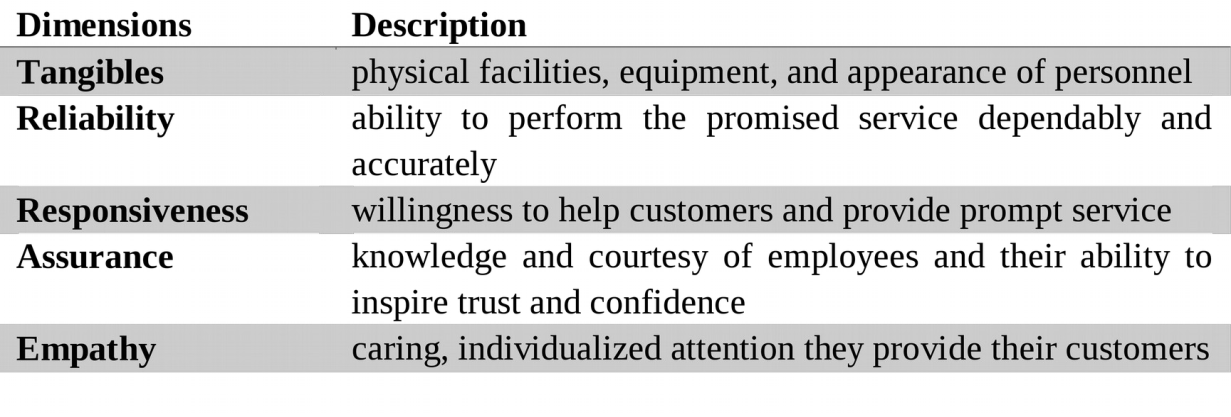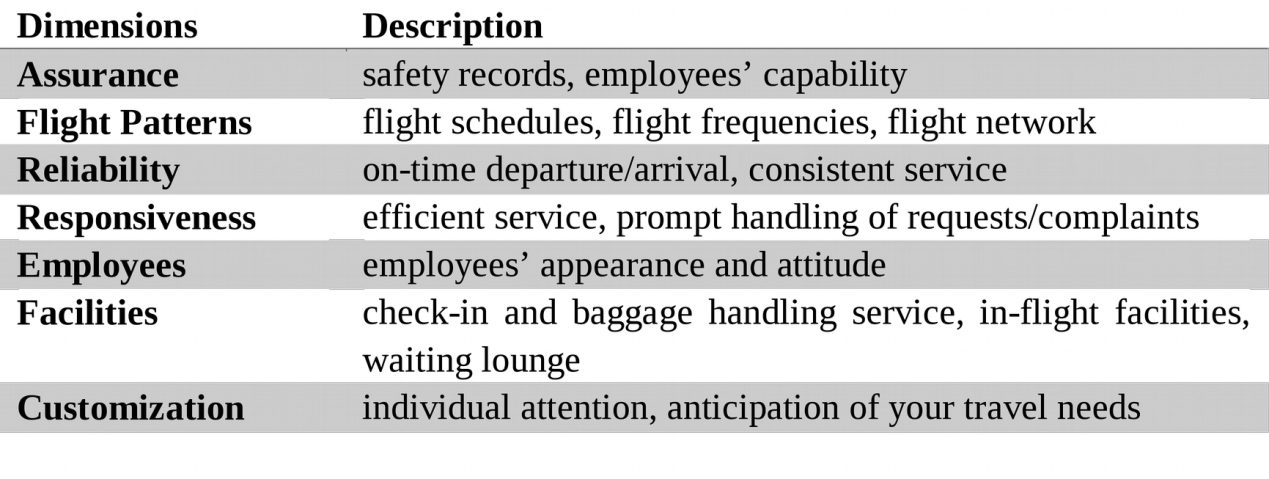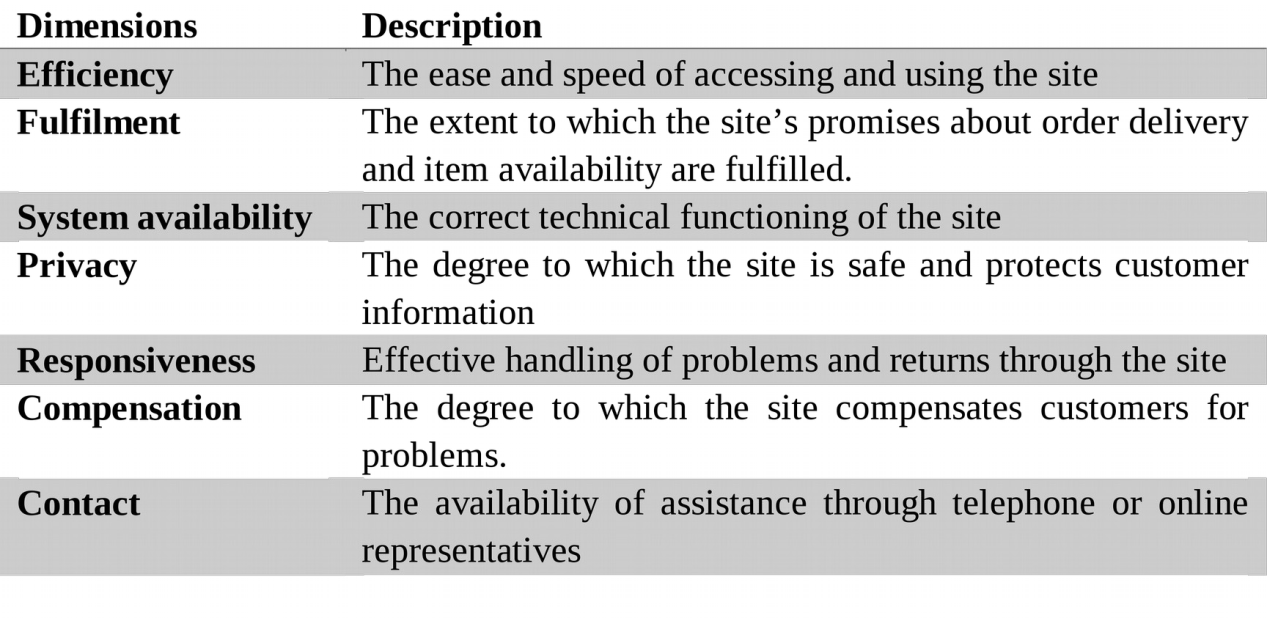Introduction
Acts, processes, and performances that share the properties of invisibility, inseparability, heterogeneity, and usefulness with goods are characterized as services (Zeithaml, Bitner and Gremler, 2012). According to Lovelock and Wirtz (2010), “high contact” services are those that are created and consumed during the service encounter, whereas “low contact” services have a low amount of direct touch and require more machinery and capital to automate. Customer service is important. The report’s subjects are Emirates, a prominent Dubai-based airline, and Netflix, a low-contact online video provider, with the goal of critically analyzing how the two service firms’ services operate (Table 1). Appendix A has detailed information about the two companies (Table 2 and Table 3). The report is broken down into three sections. In the first section, customer expectations are briefly examined, followed by a summary of the important components of the two firms’ service quality. In the final section, the marketing mix of the two companies is summarized, and the report’s recommendations are formed.
Consumers’ expectations of service providers
The demands and wishes of customers are referred to as customer expectations (Parasuraman et al., 1988). Service providers must recognize client demands in order to exceed expectations and achieve high customer satisfaction during the service experience, according to Parasuraman, Berry, and Zeithaml (1991). Consumer expectations, according to Parasuraman (1991), are dynamic, with a “tolerance zone” separating “desired service” from “sufficient service.” The desired level of service is defined as the degree of service that consumers expect, whereas the adequate level is defined as the amount of service that customers deem acceptable. Word of mouth, personal needs, and previous experience all affect the desired service.
As a result, simply achieving reasonable service expectations isn’t enough for airlines and streaming media to succeed in the market. A description of the expectations of the different consumers between the high context system Emirates and the low context system Netflix is offered in the appendix to further demonstrate the expectations of the customers of the two selected service firms (Table 4).
Factors that affect the attitude-behavior gap
According to Long and McMellon (2004), evaluating service quality entails comparing the customer’s expectations with their assessment after the experience. Parasuraman (2004) agrees, claiming that the SERVQUAL scale can be used to assess service quality. The measure comprises five different factors that all influence customer service quality: tangibles, reliability, responsiveness, assertiveness, and empathy (Table 5). Customers’ expectations of service and their perception of service after experiencing it are compared when assessing service quality. The outcomes, as well as the gaps between client expectations and actual experiences, will reveal the level of service provided. According to a study conducted by Carman (1990), new variables need be added to the SERVQUAL instrument to fully capture the concept of service quality in various service industries. As a result, Long and McMellon (2004) state that the SERVQUAL scale can be adjusted based on several characteristics.
When Gilbert and Wong (2003) studied the quality of service provided by numerous airlines, they devised the SERVQUAL scale in seven categories (Table 6). As a result, seven aspects were chosen to be measured in order to better determine the quality of Emirates’ services: reliability, assurance, facilities, staff, flight patterns, personalisation, and responsiveness.
E-service quality is described as customers’ overall assessments and judgments of the excellence and quality of e-service delivery in the virtual marketplace, similar to the service quality of a high-contact system (Santos, 2003). The SERVQUAL scale was modified by Parasuraman, Zeithaml, and Malhotra (2005) to make it useful to e-services. The modified ES-QUAL scale evaluates the efficiency, execution, system availability, confidentiality, responsiveness, compensation, and contact of a company’s online service on seven dimensions, including efficiency, execution, system availability, confidentiality, responsiveness, compensation, and contact ( table 7). As a result, the E-S-QUAL scale is regarded as a useful instrument for assessing Netflix’s service quality.
Marketing Mix
Because of the nature of the service, additional aspects of the marketing mix, such as people, processes, and physical proof, are actively involved in the operations of service organizations in addition to the classic marketing 4Ps (Constantinides, 2006).
The Product, the Price, the Location, and the Promotion
Emirates
Although traveling with Emirates airline is considered a luxury, it is found to be less expensive than many other major airlines. It is also one of the most lucrative airlines, with a $0.09 average price per kilometer (Haines, 2016). Emirates has been able to cut fares on several routes due to lower labor expenses and direct flights. Emirates has delegated labor-intensive economic units to Asian nations such as Bangladesh, India, and Pakistan (Emirates, 2018). Furthermore, UAE immigration law makes it simple for people from all over the world to work in the UAE, helping the corporation to cut labor costs even further. Emirates’ labor expenses are roughly 64% lower than British Airways’, according to O’Connell and Williams (2011). Furthermore, maintenance and repair expenses rise with the age of the aircraft; as a result, Emirates’ costs in this area are kept low, thanks to its youthful fleet (O’Connell and Williams, 2011). As a result of its low cost advantage, Emirates is able to adopt the premium pricing model, charging a higher fee for first-class customers while providing service worthy of economy-class costs.
Netflix
One of the most prevalent price strategies for video streaming services, such as Netflix, is “per period,” which normally provides unlimited access to the software for a week, month, or year (Susarla et al., 2009). According to the Totango (2012) research, about 50% of streaming service providers use period pricing. Netflix, predictably, follows the same pricing structure and provides one-month subscriptions for Basic, Standard, and Premium. The Standard subscription, for example, costs GBP 7.99 a month and allows customers to stream high-definition television on up to two devices. In addition, for the first month, Netflix customers can experience the streaming service for free. Another key pricing notion for media streaming services is a free online trial (York, 2008). This is to allow clients to try out the service for a brief time before making a purchase. According to a Totango (2012) study, 44 percent of video streaming firms offer a free trial, with 41% offering a one-month trial. Kumar (2014) emphasizes the advantages of a free online trial, stating that it aids in the conversion of non-users to paying customers.
PROCESS
Emirates
Process is an organizational structure made up of aspects that aren’t visible but provide business support, such as processes, mechanisms, and the flow of activities required to supply services (Zeithaml et al, 2010). Services are largely reliant on the process of providing services to customers throughout the company’s activities, which must be carried out in accordance with established methods and procedures by competent, dedicated, and loyal firm personnel. The smooth running of activities, the standardization of procedures aimed at decreasing service disparities, and the requirement to familiarize clients with service procedures are all important components. When the amount of consumer interaction is high and self-services are incorporated into the flow of services, as is the case with airline services, the latter is critical (Kossmann, 2006).
The Emirates Airlines process includes first- and business-class lounges, special services such as aid to disabled passengers and unaccompanied youngsters, customer relations, luggage services, check-in and boarding, and the Millennium Airport Hotel Dubai. Emirates’ service method is also structured to avoid delays, which necessitates not only planning on the side of Emirates airline management, but also assistance from third-party organizations such as support facilities and airline management. the airport (Costa, Harned and Lundquist, 2014). Check-in at the airport is frequently the first contact customers have with staff, and it often marks the beginning of their travel experience with Emirates. According to the Emirates management team, offering high-quality service on the ground while guaranteeing seamless operations becomes an even greater challenge in times of massive and rapid expansion (Emirates, 2018). To stay on top of its customers’ requirements and expectations, the airline pays special attention to every aspect, including check-in, luggage handling, aircraft cleaning, loading, and catering (Emirates annual report Group, 2016).
Netflix
Consumers are more likely to make mistakes when using very sophisticated services (Markovic and Maksimovic, 2012). As a result, there are only a few steps in the Netflix procedure. The process’s reduced complexity provides customers with quick online service while also allowing the organization to spot issues early and ensure perfect execution (Shostack, 1984).
A service plan, according to Shostack (1984), allows the organization to identify all potential problems that may arise during the service process. Service blueprinting is a flexible way to designing and maintaining successful processes (Bitner et al.2007). As a result, in order to establish a successful service plan, Netflix evaluates all actions, including those that are not visible to the customer, which serves as the foundation for defining failure points (Netflix, 2018). Self-service distribution is part of Netflix’s service method, and this low-touch feature allows customers enough control (Wirtz et al., 2012). Appendix B has detailed service plans for Emirates and Netflix.
PHYSICAL EVIDENCE
Emirates
Physical evidence is described as the component of a company’s service that is visible to clients and includes factors like cleanliness and orderliness, as well as the general appearance of the day-to-day service location. the time (Jones, 2003). Physical evidence is critical in service businesses to deliver a consistent message and maintain a consistent corporate image, according to Lovelock (2001) and Palmer (2011). Palmer (2001) underlined the importance of providing tangible commodities as part of the offering of commercial services. Physical evidence, according to Lovelock (2001), is one of the most important elements of the marketing mix because it allows the company to provide tangible objects to customers during the service delivery process as well as tangible metaphors in communications such as advertising, symbols, and brands. The fleet of current Airbus 380 aircraft, employee uniforms, qualified food and beverages, in-flight entertainment program, and different flight itineraries are all hallmarks of Emirates Airline.
Because the primary service is provided on board the aircraft, the cabin’s architecture and equipment are critical (Lovelock et al., 2007). Marketers have discovered that tangible product packaging is crucial because it helps customers visualize the product. Physical evidence serves the same purpose in the service business as packaging does in the manufacturing industry. As a result, Emirates makes use of tangible evidence to accurately identify and distinguish its product (Verma, 2008). The impact of flight attendant uniforms on company image is highlighted by Lovelock et al. (2008). A uniform has a significant impact on how customers perceive employees and the firm as a whole (Wheeler, 2009). Emirates Airlines recognized this and created a multi-sensory image for its flight attendants, complete with red caps and white scarves (Safi, 2011). The entire cabin is designed to complement the cabin crew’s specific dress and make-up. The entire cabin is designed to complement the cabin crew’s specific dress and make-up. Furthermore, all flight attendants wear the same scent, which was created specifically for the airline. The aroma is also dispersed into the cabin via air conditioning systems and used for hot towels distributed to passengers.
Because the majority of Emirates’ passengers regard the airline as a “luxury” brand that meets all of their demands, Emirates strives to keep its physical aspects up to date in order to meet customers’ expectations and communicate a sense of luxury. Emirates’ cabin crew service is likewise customized to consumer expectations, as the firm hires qualified staff who are pleasant and friendly and can communicate in a variety of languages to satisfy a variety of demands.
Netflix
According to Bitner (1992), a company’s servicescape is evaluated in terms of three types of physical evidence: ambient circumstances, spatial layout, and signage. Netflix exemplifies the online atmosphere by gathering photographs of current TV shows and making liberal use of the exhilarating color red, resulting in a stylish high-tech setting. Giurata (2014) also highlights the need of performance optimization, claiming that milliseconds are crucial. As a result, Netflix’s streaming performance is optimized for various internet conditions and physical platforms. When building a user-friendly video streaming service interface, it is believed that clarity and simplicity are quite important (Giurata, 2014). As a result, the Netflix website’s design integrates the idea of minimalism, and the Netflix logo is prominently displayed, particularly with Netflix Original programs. Furthermore, the media streaming service should be adapted for smartphones and tablets, allowing customers to use the service as efficiently on the go as they do on a computer’s internet browser (Giurata, 2014). As a result, Netflix’s physical evidence includes smart phone and smart TV apps that serve as actual items for customers.
PEOPLE
Emirates
In service businesses, people play a critical role, particularly during the service delivery process when participants connect with clients. Workers, particularly customer contact personnel, have long been emphasized by researchers as critical to providing high-quality service and contributing to total customer happiness (Booms and Bitner, 1981). It’s challenging for airlines to differentiate their offering because there are times when the only difference between two service providers is how their employees engage with their clients (Lovelock et al., 2008). As a result, Emirates places a high value on hiring, training, motivating, and rewarding employees (Safi, 2011). The organizational culture of Emirates aids the company in improving the level of service delivered by its employees. The Emirates airline is known for its multicultural workforce. It employs workers from every continent and has a workforce of more than 160 nationalities (Emirates Group Annual Report, 2016). Managers and staff are heavily involved in a continuous combined effort to improve the quality of the emirate’s services at all levels, allowing Emirates’ aircrew to display high competence despite cultural variations (O’Connell & Williams, 2011).
The organization’s unified purpose of improving its services has the unintended consequence of increasing client happiness (Loh and Ching, 2014). Furthermore, organizational culture enhances emotions of pride and self-esteem, and Emirates’ corporate culture has a favorable impact on organizational behavior and helps employees perform better. In addition, to ensure employee satisfaction and excellent customer service, Emirates provides a competitive salary and benefits package to its employees, which includes medical insurance, travel allowance, support education, 30-day annual leave, end-of-service benefits, and a substantial pension plan.
Netflix
Netflix, a cloud computing service, is described as a standardized, automated, and commoditized service (Briscoe, Keränen, and Parry, 2012), which falls under the category of low-contact services. Intangible services, on the other hand, nevertheless require effective personnel to achieve high performance and reduce errors in a complicated background system. Dunn and Probstein (Dunn and Probstein, 2003).
Netflix’s staff is bolstered by the human resource wheel idea, as the organization ensures that the proper people are hired, and that they are empowered, motivated, and energized (Wirtz et al., 2012). Flexibility, according to the corporation, is more important than long-term efficiency. As a result, Netflix is in a successful cycle because it fosters employee autonomy and follows the philosophy of attracting and fostering innovative people to boost the company’s prospects of long-term success (Netflix ,2018). Netflix is said to not have a workday policy in which employees work specified hours per day, but instead focuses on the quantity of work an employee may finish within the hours they choose (Netflix, 2018 ). Vacations are also encouraged for company employees. to return refreshed and encouraged to develop and work more efficiently Netflix employees, like Emirates employees, are handsomely compensated because the corporation thinks that high pay leads to good performance (Netflix, 2018).
Conclusion
In conclusion, a high-contact service firm and a low-contact service company have different service quality components. Several suggestions are provided to assist Emirates and Netflix in improving their service quality.
According to Parasuraman et al. (1991), reliability has consistently been proved to be superior to all other aspects of service quality. As a result, Emirates is being asked to place a greater emphasis on the dependability of its services. Emirates, for example, should continue to excel at ensuring on-time departure and arrival. Additionally, passengers regarded facilities as a critical feature. Despite the fact that Emirates is known for its young fleet and modern cabins, the airline must continue to enhance its amenities in order to better serve its passengers. To put it another way, Emirates must keep high-quality physical amenities such as the aircraft’s exterior and interior appearance, in-flight entertainment facilities and programs, in-flight internet facilities, and catering facilities up to date at all times. It is suggested that Netflix expand its system’s availability by providing an offline viewing option to users who may not always have access to a solid internet connection. The customer experience and service quality would both increase if this method were implemented. Netflix also recommended checking out their free online trial program. To convert more free users into paying customers, the organization must guarantee that the consumer is sufficiently engaged during the trial period.
References
Bitner, M., Ostrom, A. and Morgan, F. (2007). Service Blueprinting: A Practical Technique for Service Innovation. California Management Review, 50(3), pp.66- 94.
Bitner, M. (1992). Servicescapes: The impact of physical surroundings on customers and employees. Journal of Marketing, 56(2), pp.57-71.
Booms, B. and Bitner, M. (1981). Marketing Strategies and Organizational Structures for Service Firms Marketing of Services. Chicago: American Marketing Association.
Briscoe, G., Keränen, K. and Parry, G. (2012). Understanding complex service systems through different lenses: An overview. European Management Journal, 30(4), pp.418-426.
Carman, J. (1990). Consumer perceptions of service quality: An assessment of the SERVQUAL dimensions. Journal of Retailing, 66(2), pp. 33–55.
Constantinides, E. (2006). The marketing mix revisited: towards the 21st-century marketing. Journal of Marketing Management, 22(4), pp. 407-438.
Costa, P., Harned, D. and Lundquist, J. (2014). Rethinking the aviation industry. McKinsey Quarterly, 42(2), pp.89-100.
Dunn, D. and Probstein, S. (2003). Marketing High Tech Services. Review of Business, 24(1), pp.10-17.
Emirates The Emirates Group Annual Report 2016. (2016). [ebook] Available at: http://content.emirates.com/downloads/ek/pdfs/report/annual_report_2016.pdf [Accessed 5 Feb. 2018].
Emirates. (2018) About Emirates, Available at: https://www.emirates.com/uk/english/about/press-room.aspx [Accessed 5 Feb. 2018].
Giurata, P. (2014). Software development success and risk factors: SaaS projects. SSRN Electronic Journal.
Gilbert, D. and Wong, R. (2003). Passenger expectations and airline services: a Hong Kong based study. Tourism Management, 24(5), pp.519-532.
Haines, G. (2016). The cheapest airlines per mile, SSRN Electronic Journal.
Hill, C., Jones, G., Galvin, P. and Haidar A. (2007). Strategic Management An Integrated Approach. Hoboken: John Wiley & Sons.
Hofmann. (2018). Airlines implement strategies to compete with low-cost carriers. Available at: https:// www.euromonitor.com [Accessed 4 Feb. 2018].
IBISworld. (2018). Market Share of Netflix. Available at: http://clients1.ibisworld.com/reports/us/indusry/majorcopanies.aspx?entid=1370 [Accessed 4 Feb. 2018].
Jones, R. (2003). Making health information accessible to patients. Aslib Proceedings, 55(5), pp.334-338.
Kumar, V. (2014). Making Freemium Work. Harvard Business Review, 92(5), pp.27- 29.
Kossmann, M. (2006). Delivering Excellent Service Quality in Aviation: A Practial Guide for Internal and External Service Providers. Ashgate: Hampshire
Loh, T. and Ching, S. (2014). Critical element for a successful ERP implementations in SMEs. International Journal of Production Research, 42(17), pp. 3433–3455.
Long, M. and McMellon, C. (2004). Exploring the Determinants of Retail Service Quality on the Internet. Journal of Services Marketing. (18)1, pp.78-90.
Lovelock, C. (2001). Services Marketing People, Technology, Strategy. New Jersey: Prentice Hall.
Lovelock, C. Patterson, P. and Walker, R. (2007). Services Marketing: an Asia-Pacific and Australian perspective. Pearson Education Australia.
Lovelock, C. Wirtz, J. Chew, P. (2008). Essentials of Service Marketing. New Jersey: Prentice Hall.
Lovelock, C. and Wirtz, J. (2010). Services Marketing: People, Technology, Strategy.
New Jersey: Prentice Hall.
Marković, V. and Maksimović, R. (2012). A Contribution to Continual Software Service Improvement Based on the Six-Step Service Improvement Method. International Journal Of Software Engineering & Knowledge Engineering, 22(4), pp. 549-569.
Netflix. (2018). How does Netflix Work. Available at: https://help.netflix.com/en/node/412 [Accessed 4 Feb. 2018].
Netflix. (2018). Internet Connection Speed Recommendations. Available at: https://help.netflix.com/en/node/306 [Accessed 4 Feb. 2018].
Netflix. (2018). Netflix Culture: Freedom & Responsibility. Available at: https://jobs.netflix.com/ [Accessed 4 Feb. 2018].
O’Connell, J and Williams, G. (2011). Air Tranport in the 21st century – Key Strategic Developments. Farnham: Ashgate Publishing Limited.
Parasuraman, A., Zeithaml, V. and Berry, L. (1988). SERVQUAL: A multiple-item scale for measuring consumer perceptions of service quality. Journal of Retailing, 64(1), pp.12–40.
Parasuraman, A., Berry, L. and Zeithaml, V. (1991). Understanding customer expectations of service. Sloan Management Review, 32(3), pp.39–48.
Parasuraman, Berry and Zeithaml, “Refinement and Reassessment of the SERVQUAL Scale, Journal of Retailing, 42(2), pp. 420-450.
Parasuraman, A. (2004). Assessing and Improving Service Perfomance for a Maximum Impact: Insights from a two-decade-long Research Journey. Performance Measures and Metrics, (5)2, 45-52.
Parasuraman, A., Zeithaml, V. and Malhotra, A. (2005). E-S-QUAL. Journal of Service Research, 7(3), pp.213-233.
Palmer, A. (2011). Principles of Service Marketing. London: McGraw-Hill-Education.
Safi, A. (2011). Analysis of Luxury Airlines Emirates Airways and Competitors. SSRN Electronic Journal.
Santos, J. (2003). E‐service quality: a model of virtual service quality dimensions.
Managing Service Quality: An International Journal, 13(3), pp.233-246.
Shostack. G. (1984). Designing services that deliver. Harvard Business Review. 62(5), pp.47-49.
Shostack, G. (1985). The Service Encounter. Lexington: Lexington Books.
Stanik, A. Smith, P. Erakovic, E. (2007). Emirates Airlines Expansion into New Zealand. SSRN Electronic Journal.
Susarla, A., Barua, A. and Whinston, A. (2009). A Transaction Cost Perspective of the Software as a Service Business Model. Journal of Management Information Systems, 26(2), pp.205-240.
Totango. (2012). SaaS free trial, freemium and pricing benchmark. SSRN Electronic Journal.
Verma, H. (2008). Service Marketing: Text and Cases. Delhi: Dorling Kindersley. Wheeler, A. (2009). Designing Brand Identity: An Essential Guide for the Whole Branding Team. Hoboken: John Wiley & Sons.
Wirtz, J., Chew, P. and Lovelock, C. (2012). Essentials of Services Marketing. Singapore: Pearson Education South Asia.
York, J. (2008). Software-as-a-Service Success: The Top Ten Dos and Don’ts of SaaS Journal of Information Management, 42(2), pp.67-84.
Zeithaml, V. Bitner, M. and Gremler, D. (2012). Services marketing. New Jersey: Prentice Hall
Appendix
Table 1 Design decision differences between Emirates and Netflix

TABLE 2 SITUATION ANALYSIS OF EMIRATES

Table 3 – Netflix

Table 4
Customer service expectations for high-contact system Emirates and low-contact system Netflix.

Table 5
FiverDimensions of SERVQUAL scale

Table 6
SevenDimensionsof modified SERVQUAL scale

Table 7
Seven Dimensions of E-S-QUAL Scale

 write
write